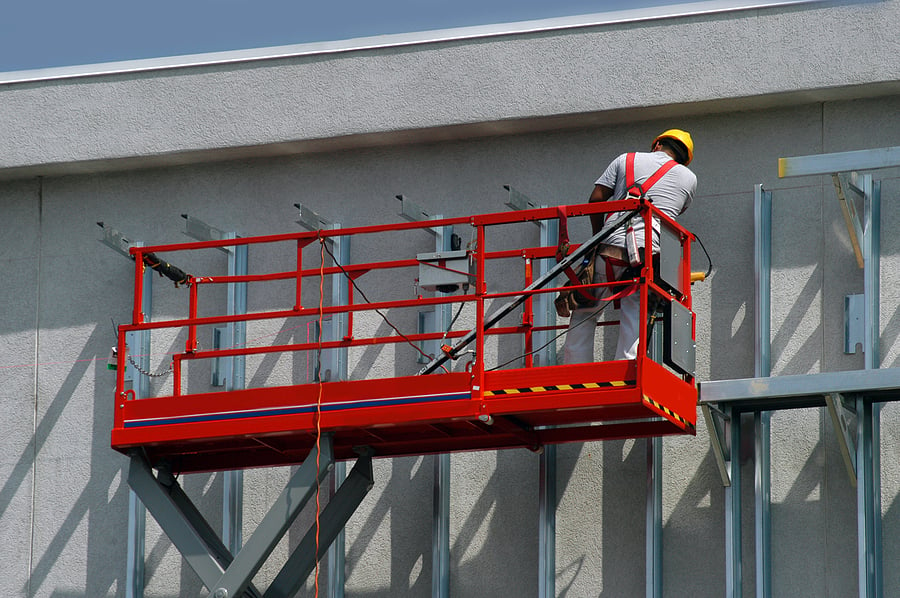5 Ways we can help you follow the HSE Construction Safety Guidance

HSG150 is a safety guide aimed at anybody involved in construction work, including clients, designers, contractors and individual workers. It provides help and assistance on how to work safely, identify the main causes of accidents and ill health, and explains how to eliminate hazards and control risks. SG World has a range of products which make it easy to adopt the advice outlined in the guide.
Pre-Use/Daily Inspections
A pre-use or daily inspection is a key mitigation element of site safety especially when working at height. HSG150 has specific recommendations for the different sorts of equipment present on a construction site.
Working Platforms
In addition to a competent person inspection at the point of installation or assembly, working platforms should be continually inspected after any event likely to have affected its stability, e.g. following strong winds or substantial alteration; and at regular intervals if the working platform is below 2 m or at intervals not exceeding seven days if the working platform is at 2 m or above.
In this situation, the use of a visible tag system (which can be updated each time a check is carried out) to supplement inspection records is one way of recording that the pre-use check has been undertaken.
Ladders
Ladders should have a pre-use check each working day and a current detailed visual inspection, which has been carried out in accordance with the manufacturer’s instructions and recorded. Ladders that are part of a scaffold system must be inspected every seven days.
Harnesses
Harnesses and lanyards are made of man-made fibres and as such are prone to degradation by sunlight, chemicals, abrasive particles etc. It is important to carry out tactile pre-use checks daily, in good light, before taking harnesses and lanyards into use.
MEWPS
Before a MEWP is used you must make sure that the daily inspection has been completed;
At the end of each day check that the machine log has no record of any faults, malfunctions, repairs or maintenance requirements.
Hoists
Hoists must be thoroughly examined and tested after erection, substantial alteration or repair and at relevant intervals. Regular checks should be carried out and the results recorded. As a general guide, weekly checks should suffice.
Vehicles
Construction vehicles work in harsh environments and require effective maintenance. A programme of daily visual checks, regular inspections and servicing schedules should be established according to the manufacturer’s instructions and the risks associated with the use of each vehicle. Drivers should be encouraged to report defects or problems. Reported problems should be put right quickly and if they are safety critical, the machine should be taken out of use until they are repaired.

Site Access
A construction site should not be generally accessible to the public to protect people from site hazards. Part of this will be the erection of suitable fencing and signage but visitor control can also play a part. Keeping track of contractors working on site is also essential. A checking in system will track visitors and contractors on site and is also an opportunity to make visitors aware of any site safety rules. An accurate visitor log will also act as a roll call in an emergency evacuation.
564 Make sure site visitors report to the person in charge of the site and know where to go – notices may be required at the site entrance. A waiting area may be needed. Visitors should not be allowed to wander around the site alone. A booking-in system may be needed on larger sites.
569 Who is responsible for managing and monitoring any contractors while they are on site to check they are working safely and to their method statement as agreed? Are contractors expected to sign in and report to a named site contact so that their presence on site is always known?
Permits to Work
Permit to Work systems are often part of site safety precautions. The HSE defines a permit-to-work system as “a formal recorded process used to control work which is identified as potentially hazardous. It is also a means of communication between site/installation management, plant supervisors and operators and those who carry out hazardous work.”
Examples of Permits to Work include working in confined spaces, working at height, lone working and hot work. The HSG150 specifically cites their potential inclusion when dealing with confined spaces.
513 There should be a safe system of work for operations inside confined spaces. Everyone should know and follow the system. A permit-to-work system may be required.
CDM Safety Boards
The Construction (Design and Management) Regulations 2015 (CDM), places formal responsibilities on the principal contractor for securing health and safety on site. Whilst the legal requirements of CDM do not apply to every job, it’s principles of successful health and safety management are the same. Most construction sites will use a CDM board to communicate important H&S information such as fire escape routes, a copy of the mandatory HSE poster and copies of the Form 10 notification which should be displayed at a place on site where it can be easily read.

Accident Reporting
Employers have a duty under the law (Reporting of Injuries, Diseases and Dangerous Occurrences Regulations 1995) to report to HSE certain types of accidents that happen to their employees. Even if an accident doesn’t qualify as RIDDOR reportable it’s still good practice to keep a record of accidents, illnesses and treatments given by first aiders will help to identify trends.
571 If an accident happens, find out what happened and why. Minor accidents and ‘near misses’ can give an early warning of more serious problems. Consider whether the accident would have happened if the work had been better planned or managed or employees had been better trained.
About Lisa Robinson
Lisa - word smith to the gods.
Tags: Construction
